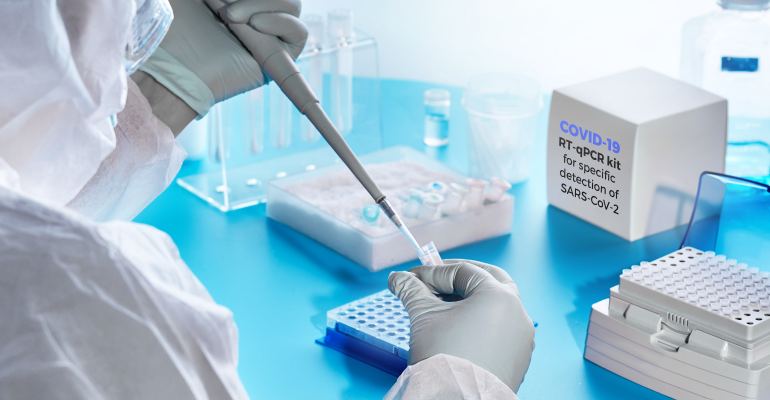In January 2020, genome of the severe acute respiratory syndrome coronavirus 2, known as SARS-CoV-2, was assembled and published, prompting the rapid development of testing methods to detect the new virus. This launched the world’s largest testing program ever, with millions of individuals tested to date. The enormous volume of testing has driven advancements in public health testing techniques, technology, and concepts.
Over the course of the pandemic, access to testing and accuracy of results has been increasingly important to ensure the containment of the infection and the safety of the population. Various forms of tests have been developed including antigen, and saliva testing to detect hallmarks of the virus, however, PCR testing has remained the most preferred and accurate testing method to date.
Rapid Results
Innovation in the COVID era has been tremendous. Since the start of the pandemic, the exploration of new kits and methodology has been in high drive, with positive outcomes. Every day, there is a new solution to accelerate rapid testing. Presently, numerous kits give individuals results within 20 minutes, which is real-time testing of very sensitive and specific samples.
During the onset of the pandemic, healthcare faced challenging limitations. There was a lack of supplies of PCR kits and machines, however, recognising this demand there has been a surge in producing more kits and diversifying testing methods. Biogenix Labs developed the saliva test last October followed by conducting a pilot study that performed positively. Young children under the age of 12 might experience sensitivity to the nasal pharyngeal swab PCR, therefore the Saliva Polymerase-Chain-Reaction (SPCR) is a promising alternative. The rollout of saliva testing in Abu Dhabi schools has been successful with over 50,000 tests executed in schools in Abu Dhabi.
Harnessing Innovation
Lab technology has evolved, and the method of detection is rapid with high throughput. Biogenix Labs has deployed reverse transcription loop-mediated isothermal amplification or RT-LAMP, a highly sensitive technology that sequences the virus, to generate a result within a few hours. “Presently, we are sequencing the virus with full genome sequencing as well and NGS technology. The idea behind using multiple methodologies, such as Oxford nanopore, and Illumina technology is to give us access to the detection of variants and mutations. This is currently taking place on a real-time basis to detect new variants and mutations, which we are reporting back to the Department of Health.”
The ultimate test
In the last year, many alternatives to PCR testing were developed, including the antigen test which produces rapid results within 15 to 30 minutes. Antigen testing has paved way for rapid mass testing solutions in other countries. “In the UAE, it has not been well adopted, since we have a huge capacity for PCRs.” Therefore, PCR is still regarded as the gold standard of testing due to its high accuracy rate, especially in the UAE.
Future of labs
The pandemic has affected the lab business, with escalated daily testing numbers changing the workflow of pathologists. “Methodologies and techniques have evolved in R&D, and overall pathologists, lab technicians, biomedical engineers have expanded their knowledge to adapt to the new normal. It has been a learning curve that has paved the way for developments in improving our processes and progressing in automation.” Fully automated solutions can further expand the capacity of PCR testing, in addition AI solutions work in tandem by linking reports from the lab to results to the patients. “The innovation we are witnessing presently is unparalleled, and it will continue to evolve,” concludes Dr. Mahmoud.

